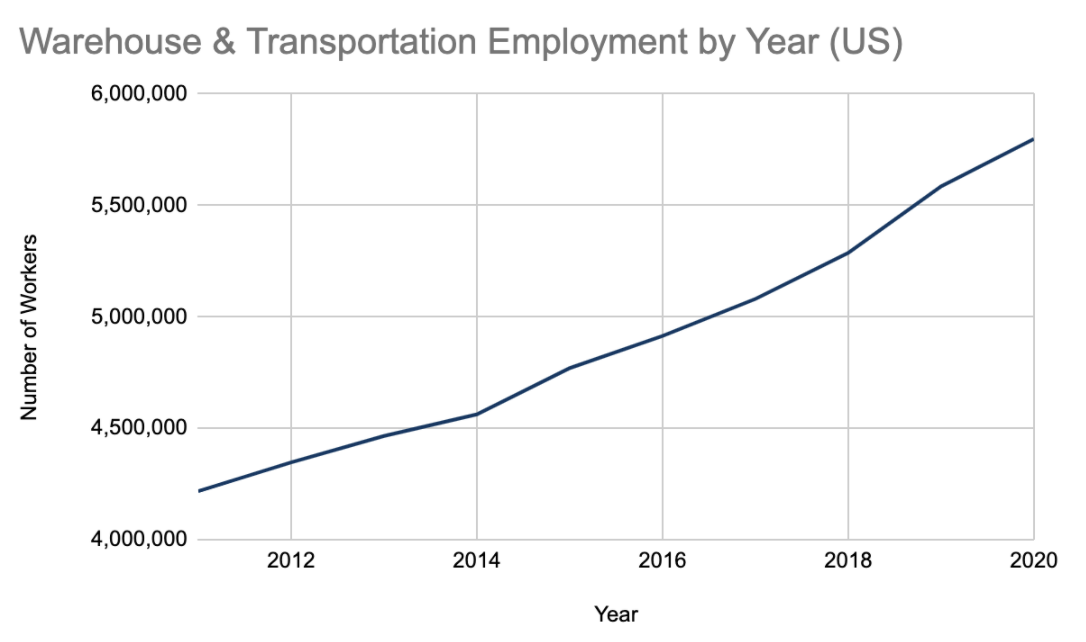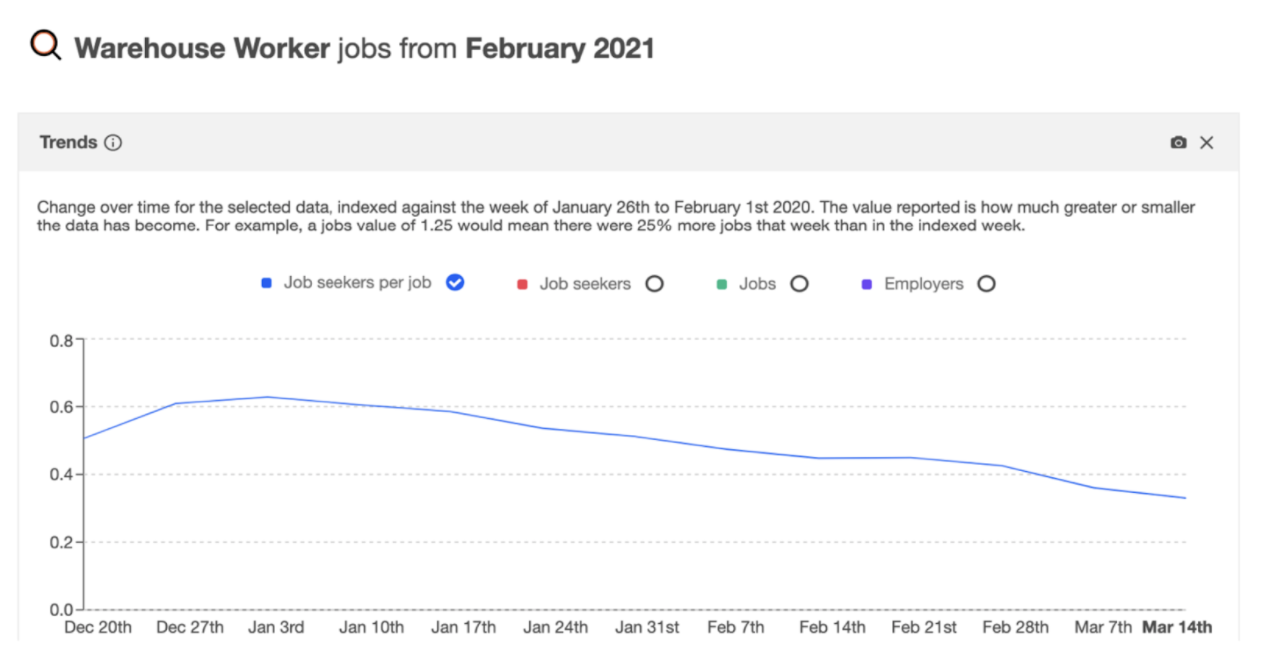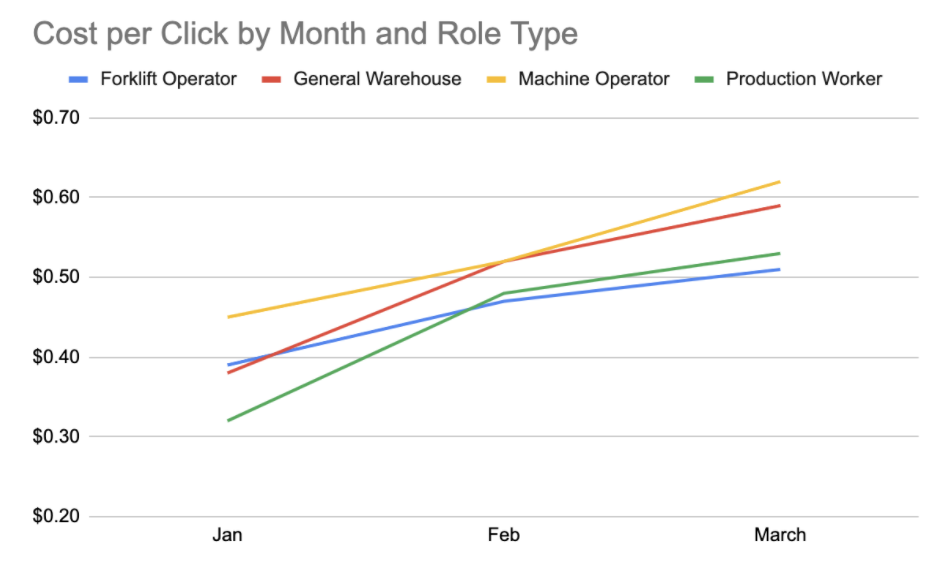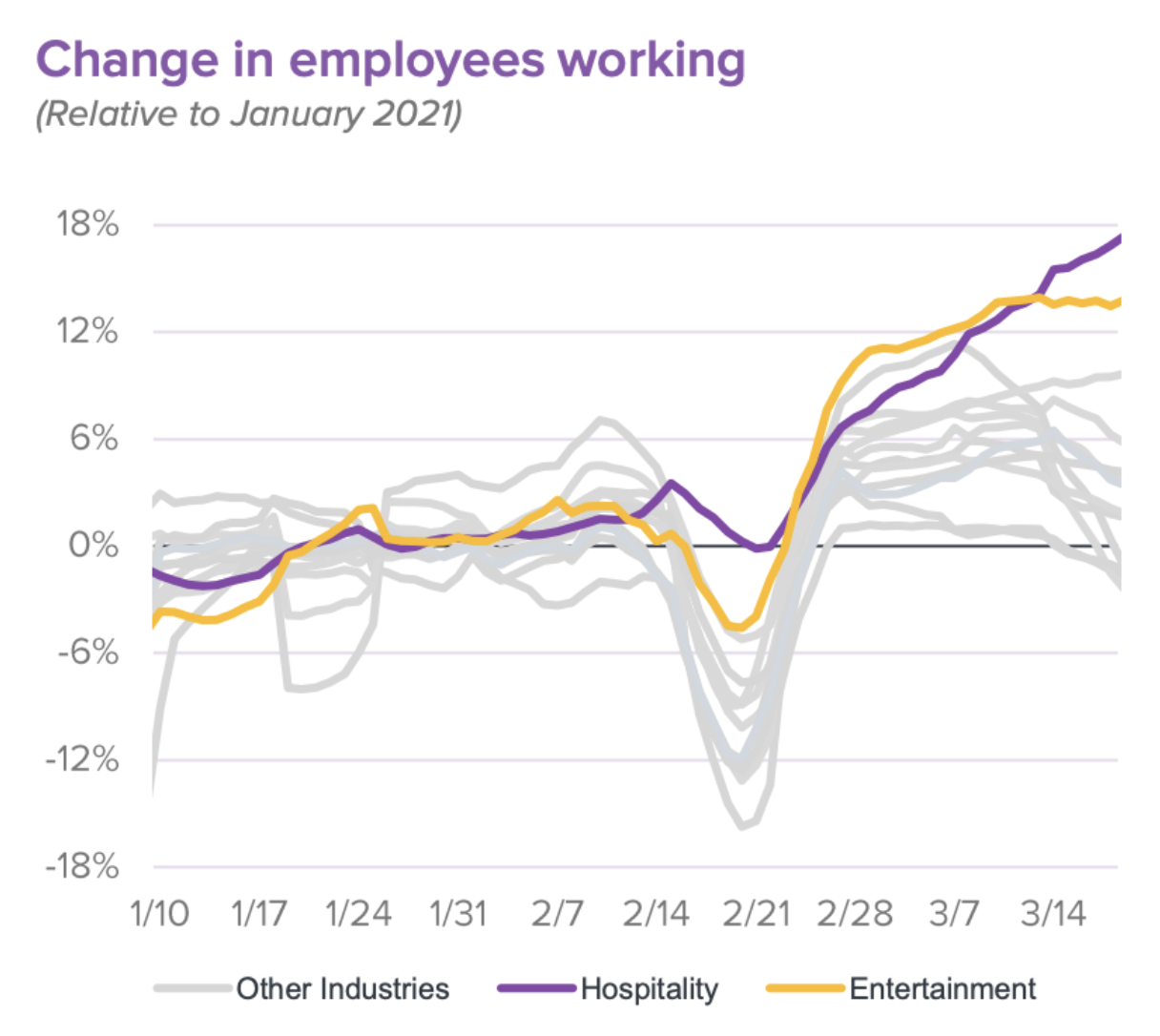
While frontline talent for manufacturing and logistics operations has been in short supply for years, today, the market for supply chain workers is the most strained it has ever been. This labor market tightness is causing missed production schedules, unhealthy and expensive amounts of forced overtime, and a widespread industry headache.
Demand for supply chain talent has been steadily growing alongside the boom of ecommerce. Warehouse employment in the United States rose 38% over the last decade. Alongside this skyrocketing demand, until March 2020, was very low national unemployment, as well increasing workforce turnover, and an expanding ‘skills gap’ in these sectors.
For HR teams, this created a perfect storm: Amazon moving in down the street, ballooning rates of job abandonment, and no qualified candidates waiting in the pipeline.

While it would be intuitive to assume that the COVID-19 pandemic, which drove national unemployment rates above 13% would have made it easier for companies to hire for their supply chains, that was not the case. Any short term benefit to employers of more job-seekers crossing over from temporarily closed sectors of the economy was quickly outweighed by:
With unemployment hovering around 6% and the pandemic improving, 2021 seemed set up to be a more normal year for hiring and retention of frontline supply chain workers. Over the last 3 months, however, the dynamics have been anything but normal.
According to Indeed, the number of warehouse job seekers per warehouse job has decreased by almost 50% since the start of the year.

With this quick decline, it is easy to see why hiring is incredibly challenging. Because of this imbalance of supply and demand, any job publisher (for example, job boards) that adjusts pricing based on demand, has skyrocketed the price per click or per application.

Every company hiring for production, manufacturing, warehouse and transportation roles is feeling this crunch, which is being caused by 3 driving forces:
1. Continued strength of ecommerce and consumer consumption
While there was a massive spike of ecommerce adoption in 2020, this trend has continued rather than reversed, even as the ability to make in-person purchases has slowly returned.

2. A resurgence of workforce demand from other competitive sectors
As more businesses across the country can return to somewhat regular business, more employees are being hired or re-hired into hospitality, entertainment, food service and retail roles, creating even more demand for hourly talent.

3. Stimulus checks being distributed via the 3rd round of Economic Impact Payments
In March, the third round of COVID relief checks were deployed by the federal government. This netted $1400/person to nearly all households that would participate in the supply chain labor ecosystem. For a family of five, for example, this could have resulted in a $7,000 stimulus check. Beyond the obvious positive impact to the end recipient, the effect on the sector is a delay in workforce availability, as such payments allow some Americans the option to delay a return to work, if desired.
When hiring is nearly impossible, companies need to double down on retaining the workers they currently have on their roster. This can be accomplished in a few ways:
Questions? Comments? Feedback? You can reach WorkStep at employers@workstep.com